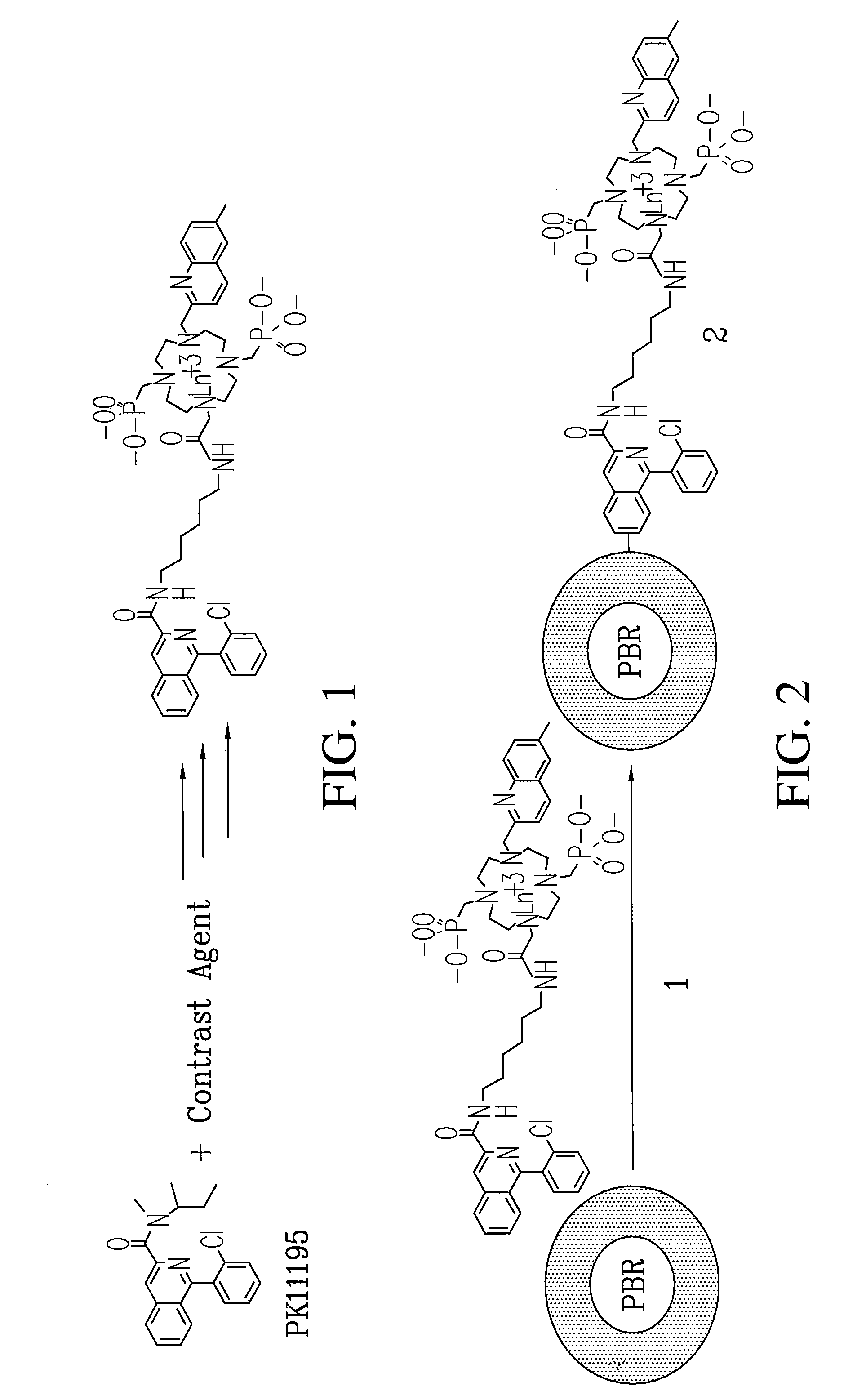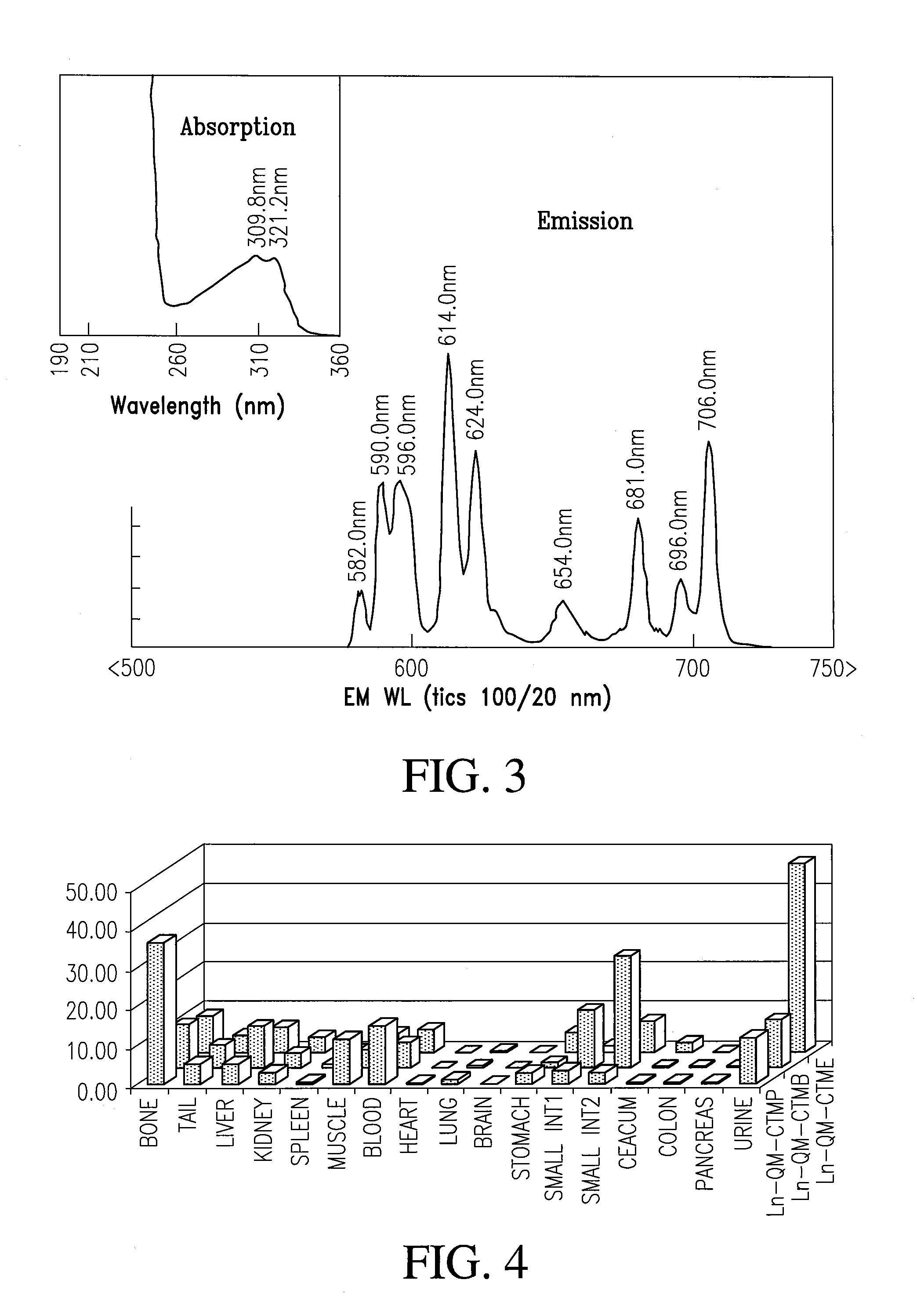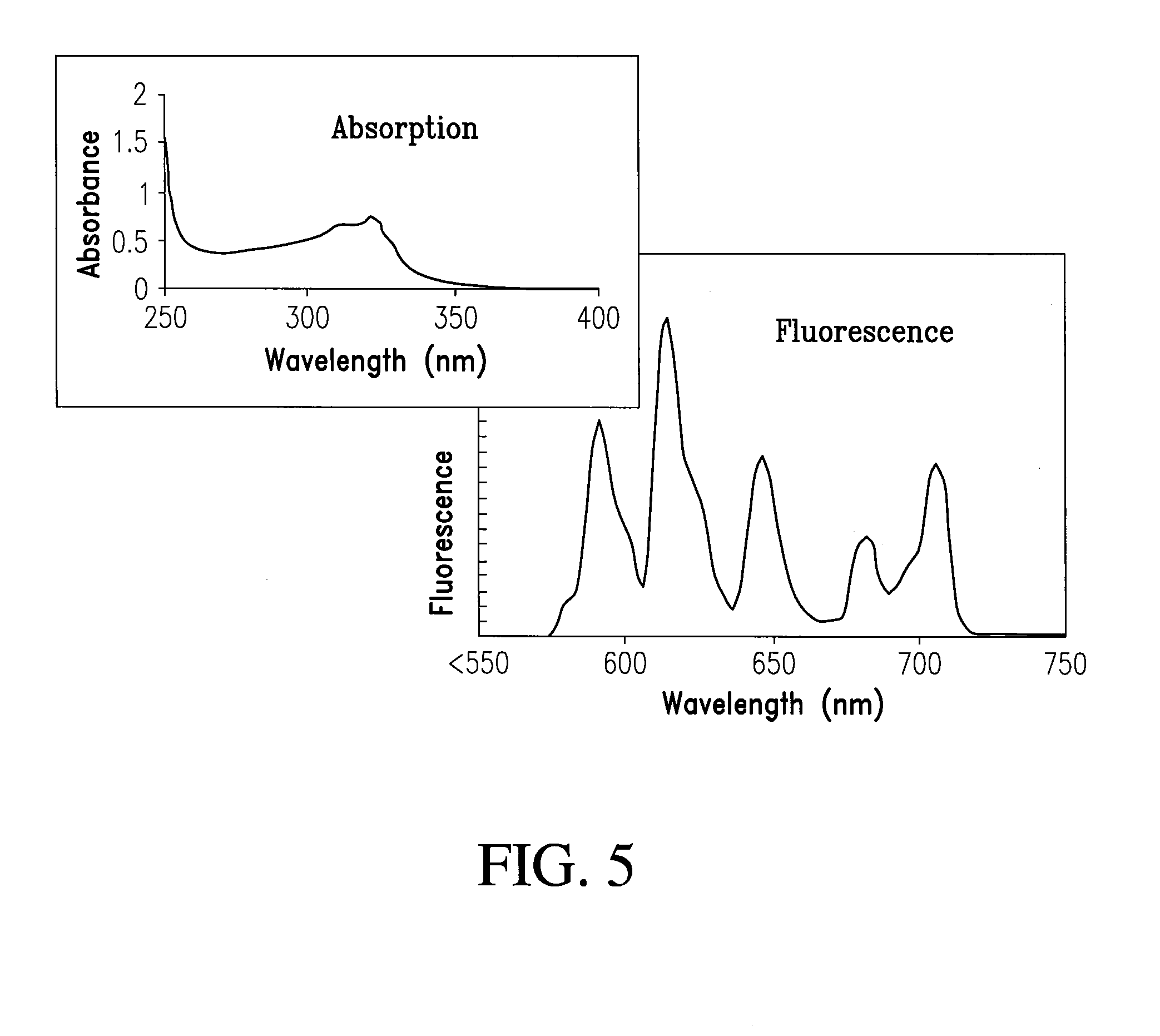Multi-use multimodal imaging chelates
a multi-modal imaging and chelate technology, applied in the field of contrast agent formation, can solve the problems of limited degree to which a complete brain resection can be carried out, difficulty in visually detecting differences between normal brain tissue and malignant tissue, and inability to over-emphasize the importance of imaging and detection techniques, etc., to achieve the effect of improving brain cancer clinical outcomes, facilitating macroscopic and microscopic scale images, and easy modification of spectral properties and biospecificity
- Summary
- Abstract
- Description
- Claims
- Application Information
AI Technical Summary
Benefits of technology
Problems solved by technology
Method used
Image
Examples
example 1
Method of Making Cyclen-based Lanthanide Chelates
[0072]Scheme I shows a method of preparing a first class of cyclen-based lanthanide chelates by attaching quinoline antennae to cyclen and then functionalizing the macrocycle.
[0073]
[0074]First, to a stirring solution of cyclen (3.52 g, 0.0204 mol) in chloroform (525 mL) was added 2-(Chloromethyl)-6-fluoroquinoline 19 (2 g, 0.0102 mol). The reaction was then allowed to stir until completion as determined by TLC, concentrated and purified on silica using a gradient elution system starting with 50:1 CHCl3:MeOH; 150:4:1 CHCl3:MeOH:NH4OH; 100:4:1; 50:4:1; and finally with 20:4:1 to afford 2.54 g (75%) of a pale yellow oil that solidified on standing to an off-white solid. The resulting compound is N-(6-fluoro-2-quinolylmethyl)-1,4,7,10 tetraazacyclododecane 21.
Formation of N-(6-fluoro-2-quinolylmethyl)-N′, N″, N′″-tris(methylene phosphonic acid)-1,4,7,10 tetraazacyclododecane 25, wherein Y=F
[0075]To a stirring solution of the resulting N-(...
example 2
[0085]A tri-functional cyclen-based lanthanide chelate may be used to facilitate molecular imaging and allow site-specific delivery. This tri-functional chelate is conjugated, via standard linking chemistry to a carboxylate group, is light sensitized through the antenna and is a strong ligating complex through the phosphonate pendent arms and heterocycle. This is a facile and efficient synthesis that can be used to make numerous imaging agents. In addition, the resulting 6-substituted quinaldines have light stability and are very inexpensive to prepare.
Method of Making
[0086]The general synthesis used to accomplish this task is shown in Scheme II and provides a vehicle to make numerous molecular imaging agents for targeted delivery, all of them having unique and improved absorption properties.
[0087]
[0088]As depicted in Scheme II, the synthesis of a carboxylate derivation of a cyclen-based lanthanide chelate is produced using the following method. First, 1,7-Bis(bezyloxycarbonyl)-1,4,...
example 3
[0094]Subsequently, the cyclen-based lanthanide chelates obtained in EXAMPLE 2 can be conjugated to PK-11195 to give specificity of uptake and numerous signatures for co-registration diagnostic imaging and surgical guidance. Previous studies on PK-11195 and a closely related compound indicate that it can be conjugated, will retain it biological activity and can therefore be used as a molecular imaging agent to detect blastoglioma and study mitochondrial function.
Method of Making Conjugable PK-11195
[0095]An Ln-PK-11195 conjugated chelate (Eu-QM-CTMC-PK11195) can be prepared and will provide useful fluorescence and MR images. Scheme III illustrates a process for making a small quantity of high purity conjugable PK-11195.
[0096]
A conjugable form of PK-11195 is formed by first producing 2-Chloro-N-(2-hydroxy-1-methyl-2-phenylethyl)benzamide 75 by the following process. To an ice-cooled mixture of Norephedrine 71 HCl in CH2Cl2 (120 mL, 5.2 g, 27.8 mmol) and 40 mL of 5% NaOH was added drop...
PUM
| Property | Measurement | Unit |
|---|---|---|
| temperature sensitive | aaaaa | aaaaa |
| temperature | aaaaa | aaaaa |
| pH | aaaaa | aaaaa |
Abstract
Description
Claims
Application Information
 Login to View More
Login to View More - R&D
- Intellectual Property
- Life Sciences
- Materials
- Tech Scout
- Unparalleled Data Quality
- Higher Quality Content
- 60% Fewer Hallucinations
Browse by: Latest US Patents, China's latest patents, Technical Efficacy Thesaurus, Application Domain, Technology Topic, Popular Technical Reports.
© 2025 PatSnap. All rights reserved.Legal|Privacy policy|Modern Slavery Act Transparency Statement|Sitemap|About US| Contact US: help@patsnap.com



